Imagine settling into your cozy home theater, popcorn in hand, ready to watch the latest blockbuster. The seats are comfortable, the sound system is impeccable, but something feels off. The lighting is either too harsh or too dim, ruining the cinematic experience. This is where the importance of proper home theater lighting comes into play, transforming your movie nights from ordinary to extraordinary.
Effective home theater lighting goes beyond mere illumination. Did you know that the right lighting can reduce eye strain by up to 64% during long viewing sessions? It also sets the mood, enhances the visual quality of the screen, and ensures safe navigation in the dark. These benefits highlight why investing in a well-thought-out lighting setup is crucial for any home theater enthusiast.
In this ultimate guide, we’ll explore everything you need to know about lighting your home theater. From understanding the different types of lighting to choosing the right fixtures and installation tips, this guide will provide you with all the insights you need to create the perfect cinematic ambiance. Keep reading to discover how you can elevate your home theater experience with the right lighting solutions.
Why Lighting Matters in a Home Theater
Proper lighting transforms your movie nights into immersive experiences. It reduces eye strain, sets the mood, and adds a touch of elegance to your home theater. Strategically placed lights enhance visibility without causing glare, ensuring you can navigate your space safely. Additionally, tailored lighting allows you to create a unique atmosphere that reflects your style.
Proper lighting isn’t just about brightness—it’s about creating an environment that complements the viewing experience. For example, dimmable lights can help you adjust the brightness levels to match different movie genres or moods. Warm, soft lighting can create a cozy, intimate setting for a romantic film, while cooler, more intense lighting might be better for an action-packed blockbuster.
Lighting also significantly reduces eye strain, a common issue when watching TV or movies in a dark room. By providing a balanced light source, you can minimize the contrast between the bright screen and the dark surroundings, making it more comfortable for your eyes.
Key Considerations for Home Theater Lighting
Room Size and Layout
The size and layout of your room significantly impact your lighting design. Larger rooms require more light sources to ensure even illumination, while smaller spaces benefit from carefully placed lights to avoid overwhelming the area. Consider the room’s dimensions and how light will travel through it.
When planning your lighting, think about the shape and features of your room. For instance, a room with a low ceiling might benefit from recessed lighting, which doesn’t take up space or hang down. In contrast, a room with high ceilings might be perfect for elegant pendant lights or chandeliers.
Consider the placement of furniture and how people will move around the room. Ensure that pathways are well-lit to prevent accidents and that seating areas have enough light for activities like reading or using remote controls without creating reflections or glare on the screen.
Screen Placement and Viewing Angles
Position your lights to avoid direct illumination on the screen, which can cause glare and reflections. Ensure that viewers have clear sightlines and comfortable viewing angles. Properly placed lights can enhance the visual quality and make long viewing sessions more enjoyable.
Think about the placement of your screen and the direction of the lights. Overhead lights should be positioned to illuminate the room without shining directly on the screen. Wall sconces or LED strips can provide subtle background lighting, helping reduce eye strain without affecting the picture quality.
It’s also essential to consider the screen’s height and the seating arrangement. Ensure all viewers have a clear line of sight to the screen without lights causing distractions or shadows. Adjustable lighting fixtures can be beneficial, allowing you to change the angle and intensity of the light as needed.
Light Control and Ambient Light
Controlling natural light is crucial in a home theater. Use blackout curtains or shades to block outside light, creating the ideal conditions for watching movies at any time of day. Integrate smart lighting systems to adjust light levels and create the perfect ambiance.
Natural light can be a significant problem in a home theater, especially if you want to watch movies during the day. Blackout curtains or shades are a must-have, preventing outside light from entering and interfering with your viewing experience.
Smart lighting systems offer unparalleled control over your home theater environment. With a smart system, you can adjust the brightness, color, and even the direction of your lights using a smartphone app or voice commands. This flexibility allows you to create the perfect lighting setup for any occasion, whether hosting a movie night, watching TV, or playing video games.
Types of Home Theater Lighting
Ambient Lighting
Recessed Lighting
Recessed lights, also known as can or downlights, provide even, unobtrusive illumination. They are perfect for creating a general light source in your home theater, ensuring visibility without distraction. Recessed lighting can be strategically placed throughout the ceiling to give a soft, uniform light that does not draw attention away from the screen.
Cove Aydınlatma
Cove lighting involves installing fixtures in a recessed area of the ceiling, walls, or floor. This indirect lighting method creates a soft, diffused light that enhances the ambiance without casting harsh shadows. Cove lighting is ideal for setting a relaxed, cozy mood in your home theater, and it can be used to highlight architectural details and create a sophisticated look.
Task Lighting
Reading Lights
Task lighting focuses on specific areas where activities occur. Reading lights, such as floor lamps or adjustable spotlights, provide targeted illumination without affecting the overall ambiance. These lights are perfect for individuals who want to read, browse the internet, or interact with their phones or tablets while others enjoy the movie.
Table Lamps
Table lamps are ideal for side tables next to seats, offering focused light for tasks like reading or using remote controls. They can be easily turned on or off without disturbing others and add a decorative element to your home theater setup.
Aksan Aydınlatma
LED Strips
LED strips are versatile and energy-efficient, perfect for highlighting architectural features or adding a decorative touch. They can be installed under seats, along baseboards, or around the ceiling perimeter. LED strips can change colors, making them a fun and dynamic option for your home theater lighting. They also offer the benefit of being low-profile so that they won’t interfere with your overall design.
Wall Sconces
Wall sconces add elegance and serve as both accent and task lighting. Place them on either side of the screen or along the walls to create a dramatic effect. They can be designed to cast light upwards, downwards, or in both directions, enhancing the room’s ambiance without causing glare on the screen.
Bias Lighting
Behind Screen LED Strips
Bias lighting involves placing light sources behind the TV or projector screen, reducing eye strain and improving perceived contrast. LED strips are perfect for this purpose, creating a balanced viewing experience. This type of lighting helps create a halo effect around the screen, making the picture appear more vivid and reducing the strain on your eyes in a dark room.
Fiber Optic Ceiling
Create a magical atmosphere with a fiber optic ceiling miming a starry night sky. This adds an enchanting element to your home theater and provides subtle, ambient light. A fiber optic ceiling can be a visually stunning addition, offering a unique and immersive environment that enhances the viewing experience.
Choosing the Right Lighting Fixtures
LED vs. Halogen Bulbs
LED bulbs are energy-efficient, long-lasting, and generate less heat than halogen bulbs. They are available in various colors and brightness levels, making them ideal for home theater lighting.
Halogen bulbs, on the other hand, are often brighter but consume more energy and generate more heat. This can be a consideration if you’re concerned about energy costs or the room’s temperature. LEDs are also more versatile in color options and dimming capabilities, making them a better choice for creating moods and scenes in your home theater.
Dimmable Lights for Flexibility
Dimmable lights allow you to adjust the brightness to suit different activities. This feature is particularly useful in a home theater where you might need different light levels for watching movies, playing games, or entertaining guests.
For example, you might want brighter lights when setting up or cleaning the room but dim, subtle lighting when watching a movie to avoid any glare or distraction. Dimmable lights provide the flexibility to create the perfect lighting environment for any activity, enhancing the overall experience in your home theater.
Smart Lighting Solutions
Smart lighting systems offer convenience and control, allowing you to adjust your lighting with an app or voice commands. You can create different lighting scenes for various activities, enhancing your home theater experience.
With smart lighting, you can program your lights to change automatically based on the time of day, the type of content you’re watching, or even your personal preferences. For instance, you can have a “movie mode” that dims the lights and changes their color to a warm hue or a “gaming mode” that sets the lights to a more vibrant and energetic setting. Integrating smart lighting into your home theater setup offers unmatched customization and convenience.
Creating the Perfect Lighting Plan
Layering Your Lighting
Combine ambient, task, and accent lighting to create a layered effect. This approach ensures no single light source dominates, resulting in a more natural and comfortable ambiance.
By layering different types of lighting, you can create a dynamic and flexible lighting environment. Ambient lighting provides the overall illumination for the room, task lighting focuses on specific areas where activities occur, and accent lighting adds depth and highlights key features. This multi-layered approach helps to avoid harsh shadows and glare, making the room more comfortable and visually appealing.
Integrating Lighting Controls
Use smart home systems to integrate your lighting controls. This allows you to set scenes and schedules, sync lights with your home theater system, and adjust settings easily.
Integrated lighting controls mean you can manage all your lights from a single device, whether a smartphone, tablet, or voice assistant. This integration simplifies lighting adjustments, making switching between different modes and settings easy. You can also set up automated schedules so that your lights adjust automatically throughout the day, providing consistent and optimal lighting conditions.
Setting the Mood with Color Temperature
The color temperature of your lights can significantly impact the ambiance. Warm colors create a cozy atmosphere, while cooler colors make the room feel more energetic. Adjustable RGB lights allow you to change colors based on the movie genre or mood.
Color temperature is measured in Kelvin (K), with lower values indicating warmer, more yellow light and higher values indicating cooler, bluer light. Warmer lights (around 2700K-3000K) are generally preferred for a home theater as they create a more relaxed and comfortable environment. However, adjusting the color temperature and even changing colors can add a dynamic element to your home theater, enhancing the overall experience by matching the lighting to the content you’re watching or your preferences.
Kurulum İpuçları ve Püf Noktaları
DIY vs. Professional Installation
DIY installation can save money, but professional installation ensures optimal setup and performance. Consider your budget, the complexity of your lighting plan, and your comfort level with electrical work. While DIY projects can be rewarding and cost-effective, they often require a good understanding of electrical systems and building codes. Installation mistakes can lead to inefficiencies or even safety hazards.
On the other hand, professional installation offers the advantage of expert knowledge and experience. Professionals can ensure that your lighting system is installed correctly, adheres to safety standards, and functions as intended. They can also provide valuable advice on the best lighting solutions for your space.
Wiring and Safety Considerations
Ensure your lighting setup complies with local building and electrical codes. Proper wiring is essential to avoid hazards such as electrical fires or short circuits. When planning your lighting system, consider the following:
- Circuit Load: Calculate the total load on your electrical circuits to prevent overloading. This involves adding up the wattage of all your lighting fixtures and ensuring it is within the circuit’s capacity.
- Grounding: Ensure all fixtures are properly grounded to prevent electrical shocks.
- GFCI Protection: In areas prone to moisture, such as basements, ground fault circuit interrupter (GFCI) outlets should be used to protect against electrical shocks.
- Consulting an electrician can help you address these considerations and ensure a safe and efficient setup. They can also assist with installing dimmers and smart controls, enhancing your home theater experience.
Maximizing Efficiency and Aesthetics
Choose energy-efficient lighting options like LEDs to save electricity bills and reduce heat generation. Position lights to enhance functionality and aesthetics, creating a visually appealing and efficient home theater. Here are some tips:
- Energy Efficiency: Opt for LED bulbs, which use less energy and last longer than traditional incandescent or halogen bulbs.
- Heat Management: LEDs generate less heat, which is ideal for enclosed spaces like home theaters.
- Aesthetic Appeal: Use lighting fixtures that complement your theater’s design. Recessed and cove lighting provide a sleek, modern look, while wall sconces and LED strips can add decorative elements.
Kaçınılması Gereken Yaygın Hatalar
Overlooking Dimmers
Dimmers allow you to adjust light levels, creating a comfortable viewing experience. Ensure your lighting fixtures are dimmable and integrate dimmers into your setup. This flexibility is crucial for adapting the lighting to different activities, such as watching movies, gaming, or entertaining guests.
Ignoring Ambient Light Sources
Control natural light with blackout curtains or shades to prevent glare and reflections on the screen. Plan for ways to manage ambient light effectively. Even small amounts of natural light can impact the quality of your viewing experience, so consider solutions like:
- Blackout Curtains: Thick, dark curtains that block out all external light.
- Blinds: Adjustable blinds that can be tilted to control the light entering the room.
- Window Films: Reflective films that reduce glare and heat from sunlight.
Poor Fixture Placement
Position lights to avoid direct illumination on the screen and reduce glare. Adjustable fixtures control light levels and angles, enhancing the viewing experience. Consider these placement tips:
- Ceiling Lights: Install recessed or cove lights evenly across the ceiling, avoiding placement directly above the screen.
- Wall Sconces: Place sconces on either side of the screen or along the walls to provide indirect lighting.
- LED Strips: Install strips under seats, along baseboards, or around the ceiling perimeter to create a soft, ambient glow.
Final Touches and Enhancements
Integrating Lighting with Home Automation
Integrate your lighting with home automation systems like Amazon Alexa, Google Home, or Apple HomeKit. This allows you to control lights with voice commands or through an app, enhancing convenience and functionality. Home automation systems can also enable features like:
- Scene Setting: Create and save lighting scenes for various activities, such as movie watching, gaming, or entertaining.
- Scheduling: Set lights to turn on or off at specific times, ensuring your home theater is always ready when you are.
- Remote Control: Adjust lighting from anywhere using your smartphone or tablet.
Using Lighting to Highlight Decor
Accent lighting can highlight architectural features, artwork, or movie memorabilia. Use spotlights, track lighting, or wall sconces to create focal points and add depth to your home theater. Here are some ideas:
- Spotlights: Direct light towards specific objects, such as movie posters or collectibles, to draw attention and add visual interest.
- Track Lighting: Install adjustable track lights to highlight different areas of the room, such as seating arrangements or architectural features.
- Wall Sconces: Use sconces to create a soft, ambient glow that enhances the overall aesthetic of your home theater.
Maintenance and Upkeep
Regular maintenance ensures your lighting system performs optimally. Clean fixtures, replace bulbs as needed, and periodically review your setup to ensure it meets your needs. Here are some maintenance tips:
- Cleaning: Dust and clean fixtures regularly to ensure maximum brightness and efficiency.
- Bulb Replacement: Replace bulbs as they dim or burn out to maintain consistent lighting quality.
- Inspection: Periodically inspect fixtures for signs of wear or damage and address any issues promptly.
Enhancing the Viewing Experience
Reducing Eye Strain
Use bias lighting to reduce eye strain by placing light sources behind the screen. This creates a balanced viewing experience and improves perceived contrast. Bias lighting can also help reduce the contrast between the bright screen and the dark room, making it easier on your eyes during long viewing sessions.
Creating Ambiance
Adjust your lights’ color temperature and intensity to create the perfect ambiance. Dynamic lighting effects, like dimming the lights when the movie starts, can enhance the viewing experience. Consider using smart lighting systems to automate these effects and create a more immersive environment.
Practical Tips for Optimal Viewing
Experiment with different lighting setups for various activities. Use dimmable lights for watching movies, ensure task lighting for gaming, and brighten the room with accent lighting for entertaining guests. Here are some additional tips:
- Use Multiple Light Sources: Combine ambient, task, and accent lighting to create a layered effect that enhances the overall ambiance.
- Adjust Brightness Levels: Use dimmers to adjust the brightness of your lights based on the activity and time of day.
- Optimize Light Placement: Position lights to minimize glare and reflections on the screen, ensuring a clear and comfortable viewing experience.
Creative Lighting Tips to Enhance Your Home Cinema Atmosphere
Control Your Lighting on Phone
Use smart lighting apps to control your home theater lighting from your phone, allowing you to create the perfect ambiance without leaving your seat. This convenience makes it easy to adjust lighting levels, colors, and scenes to suit your mood and activities.
Create a Starry Night Sky
Add a touch of magic with a fiber optic ceiling, creating the illusion of a starry night sky and adding an enchanting element to your movie nights. This effect can enhance the overall atmosphere of your home theater and make it feel like a real cinema.
Incorporate Light Diffusers
Light diffusers help spread light evenly across your home theater, reducing harsh shadows and glare. They enhance the colors and clarity of your on-screen images, creating a more pleasant and immersive viewing experience.
Maintenance and Upkeep
Düzenli Bakım İpuçları
Clean and dust fixtures regularly to ensure optimal performance. Check and replace bulbs as needed and inspect fixtures for any signs of wear or damage. Regular maintenance helps prolong the life of your lighting system and ensures a consistent viewing experience.
Sık Karşılaşılan Sorunların Giderilmesi
Address flickering lights by ensuring all connections are tight and secure. Replace faulty bulbs and consult an electrician if voltage fluctuations occur. Regularly inspect your lighting setup to identify and resolve any issues promptly.
SSS
Q: What type of lighting should I use for my home theater?
A: A mix of ambient, task, and accent lighting works best for home theaters. Ambient lighting provides general illumination; task lighting focuses on specific areas, and accent lighting highlights features or sets the mood.
Q: How can I control lighting during movie time?
A: Smart lighting systems are ideal for controlling lighting during movie time. You can use apps or voice commands to create different lighting scenes, such as dimming the lights for a movie or brightening them for a break.
Q: Why is bias lighting important for home theaters?
A: Bias lighting, placed behind your TV or screen, reduces eye strain by balancing the light levels in the room. It improves perceived contrast and enhances the overall viewing experience.
Q: How do I choose the right color temperature for home theater lights?
A: For a more energetic feel, choose warm colors (2700K-3000K) for a cozy, inviting atmosphere and cooler colors (5000K-6500K). Adjustable RGB lights can provide dynamic color options based on your mood and the content you’re watching.
Q: What are some creative lighting ideas for enhancing my home theater?
A: Consider using fiber optic ceilings to create a starry night sky effect, installing LED strips behind your screen for bias lighting, and using smart lighting apps to control your lighting from your phone for added convenience.
Q: How can I reduce glare on my home theater screen?
A: Position your lights to avoid direct illumination on the screen. Use dimmable fixtures and blackout curtains, and consider matte finishes for walls and ceilings to minimize reflections and glare.
Q: Can I install home theater lighting or hire a professional?
A: While DIY installation can save money and be rewarding, professional installation ensures optimal setup and safety. If your lighting plan is complex or you’re uncomfortable with electrical work, it’s best to consult a professional.
Q: What is the role of accent lighting in a home theater?
A: Accent lighting highlights architectural features, artwork, or movie memorabilia, adding depth and interest to your home theater. Wall sconces and LED strips are excellent choices for accent lighting.
Q: How often should I maintain my home theater lighting?
A: Regularly clean fixtures, replace bulbs as needed, and periodically inspect your setup for signs of wear or damage. Proper maintenance ensures optimal performance and longevity of your lighting system.
Q: How can lighting enhance the overall home theater experience?
A: Proper lighting reduces eye strain, sets the right mood, and enhances the visual appeal of your home theater. By layering different types of lighting and using smart controls, you can create a comfortable and immersive viewing environment.
Sonuç
Proper lighting is crucial for creating the ultimate home theater experience. By carefully planning and selecting the right fixtures, you can enhance your viewing pleasure, reduce eye strain, and add a touch of personal style to your space. Regular maintenance ensures your lighting setup continues to perform at its best. Experiment with different lighting options and create a home theater that truly shines.
Creating the perfect home theater lighting setup is essential for an immersive and enjoyable viewing experience. From choosing the right fixtures to maintaining your lighting system, every detail contributes to your space’s overall ambiance and functionality. As you embark on this journey, remember that Unitop is one of China’s leading LED şerit ışıklar ve neon flex manufacturers. Our expertise and high-quality products can help you achieve the ultimate lighting design for your home theater. If you have any questions or specific requirements, please Bize ulaşın. Let Unitop illuminate your home theater with our cutting-edge LED solutions, enhancing your movie nights like never before.

Tom şu anda Unitop (Çin) Co, Limited. Bir süredir LED Aydınlatma 2005'ten beri sektörde. Satış & pazarlama ve fabrika yönetimi konularında uzmandır. Vücut geliştirmeyi seviyor ve aynı zamanda çılgın bir Apple Hayranı! Çalışkan bir adamdır ve yeni şeyler öğrenmeyi ve denemeyi sever.
E-posta: tom@unitopledstrip.com WhatsApp: +86-18680307140

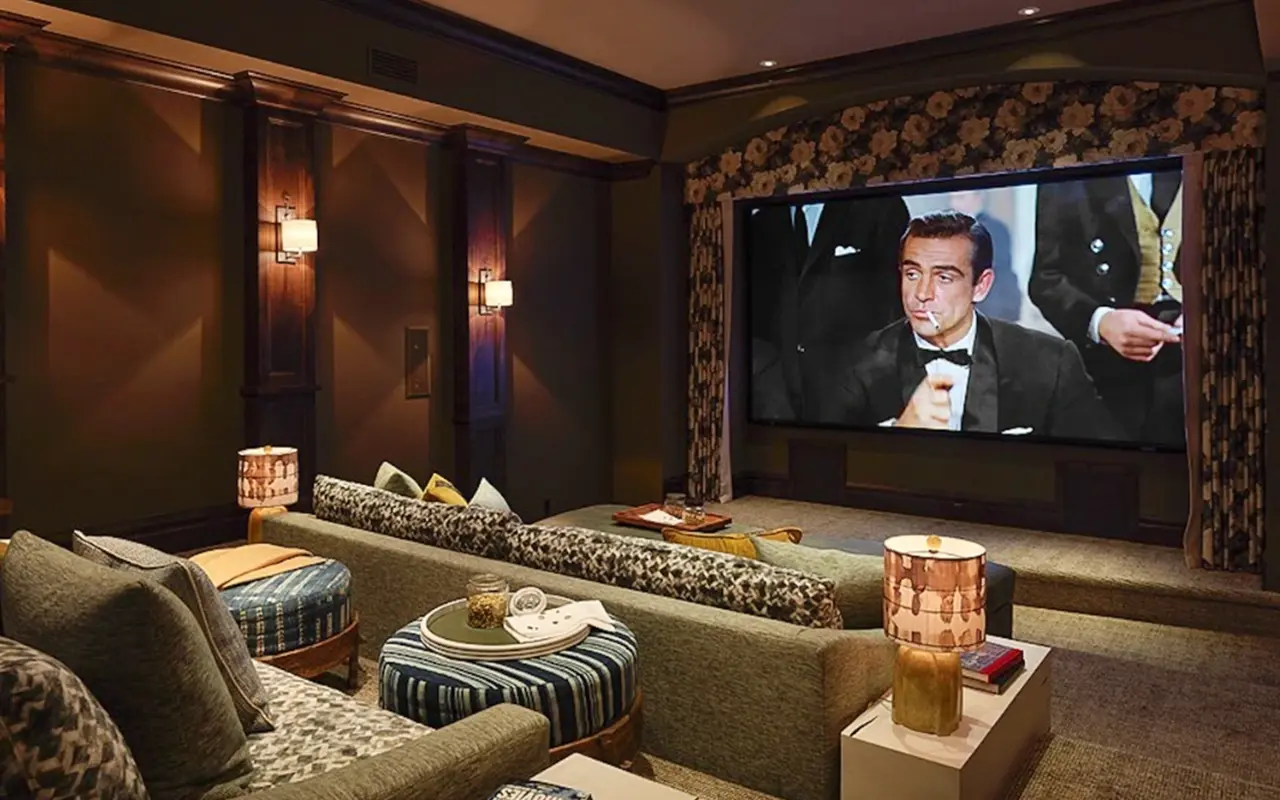
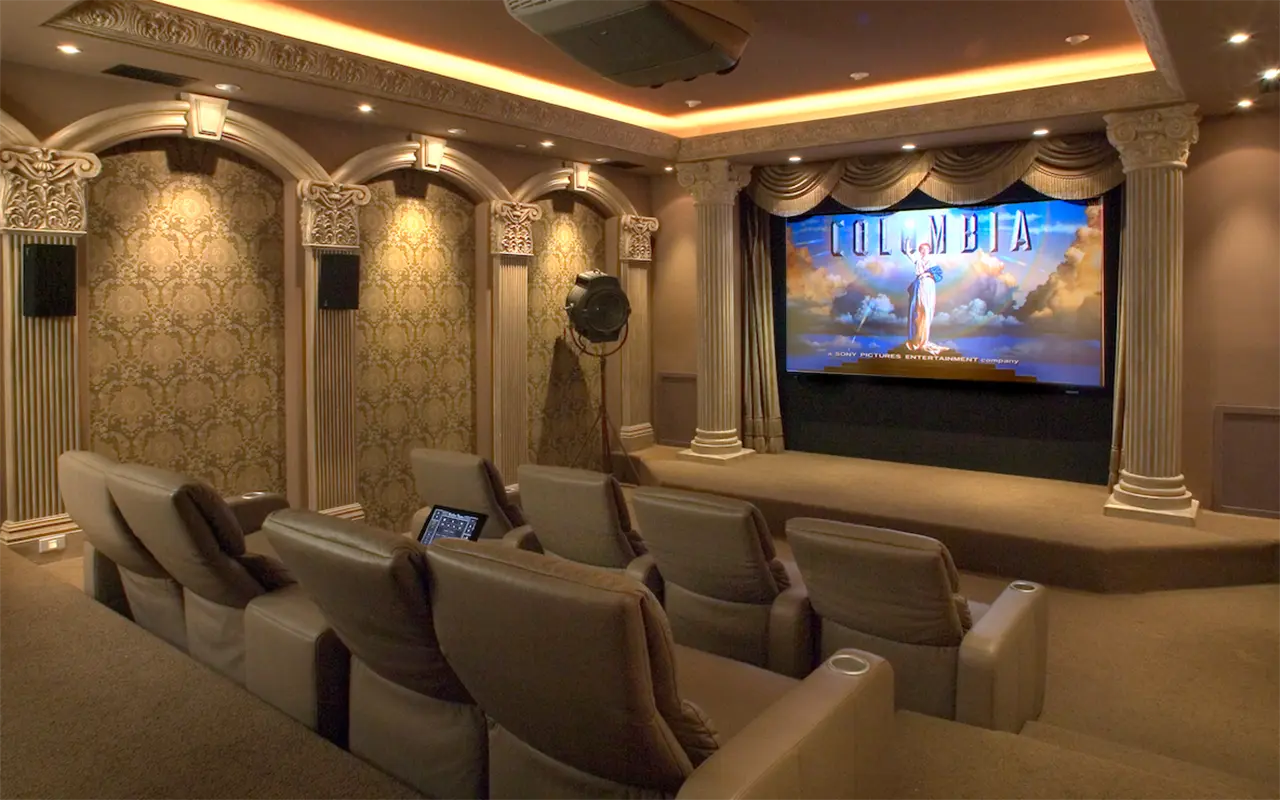
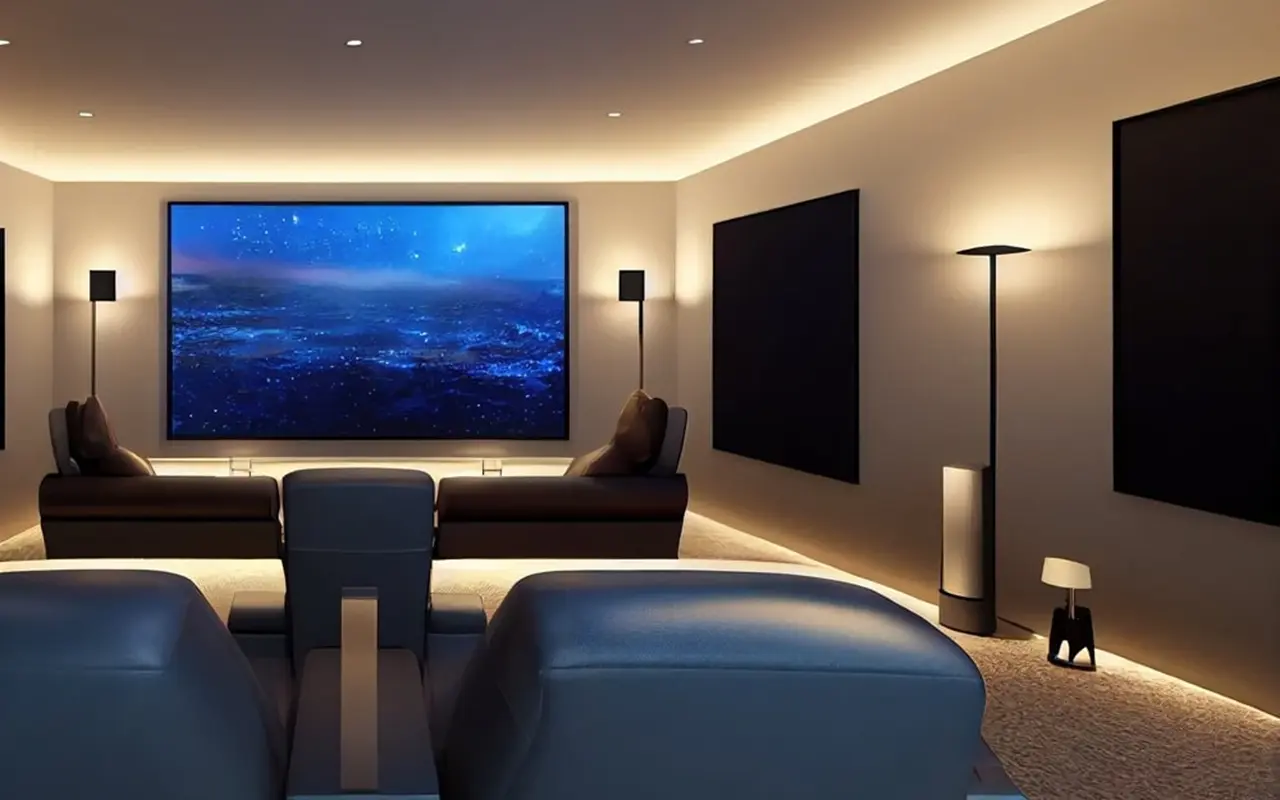
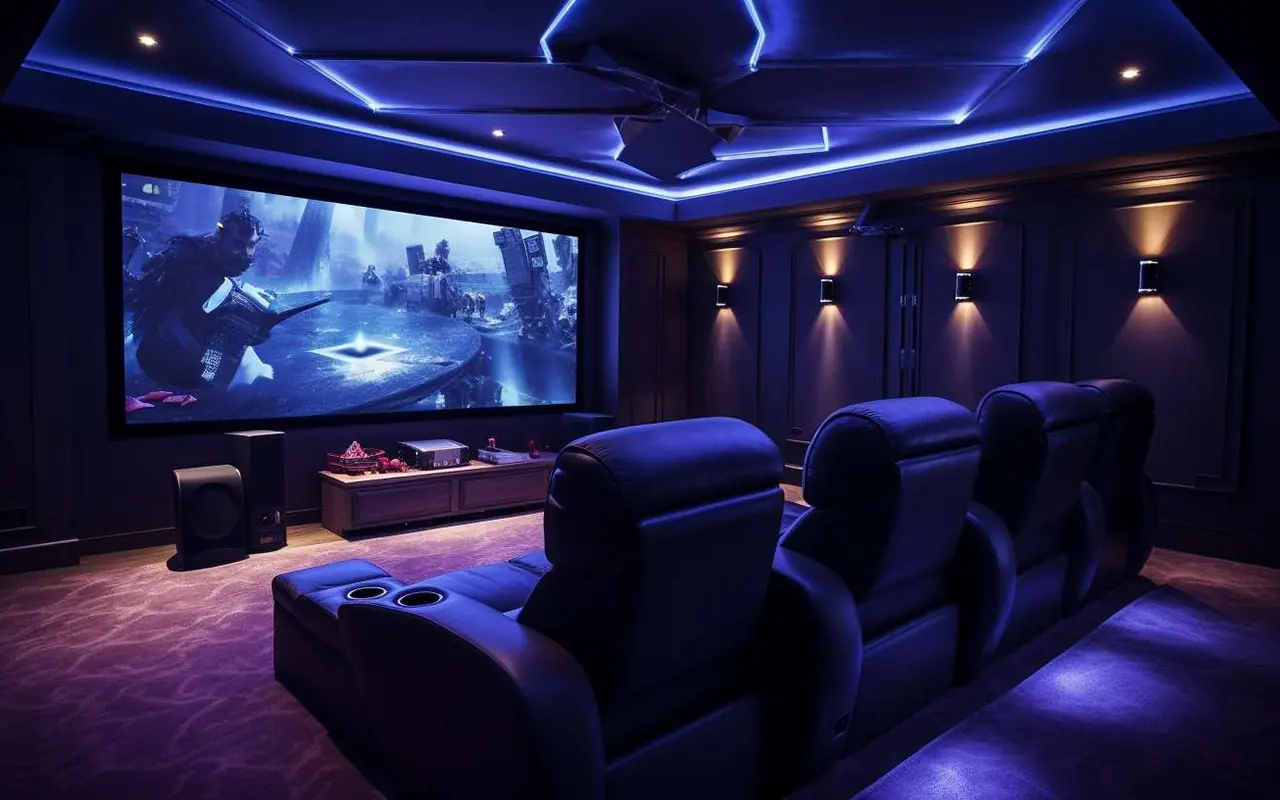
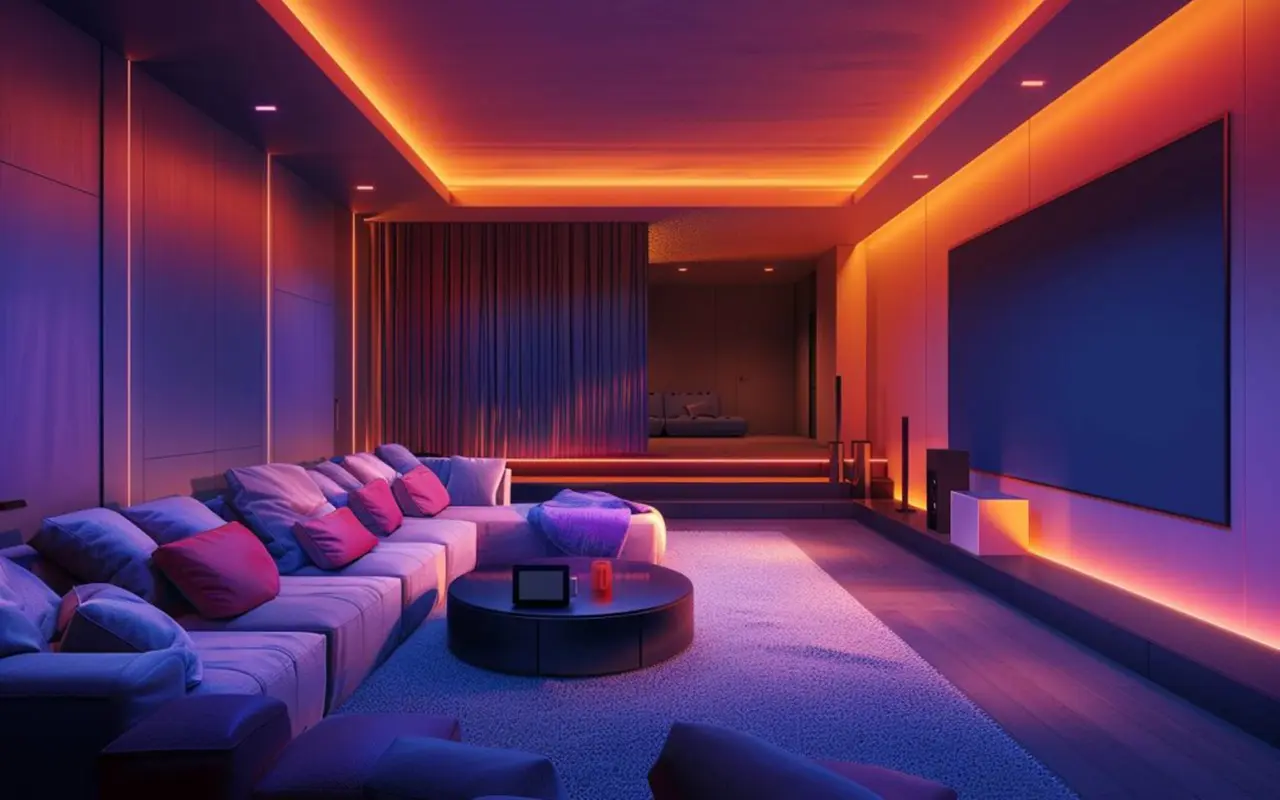
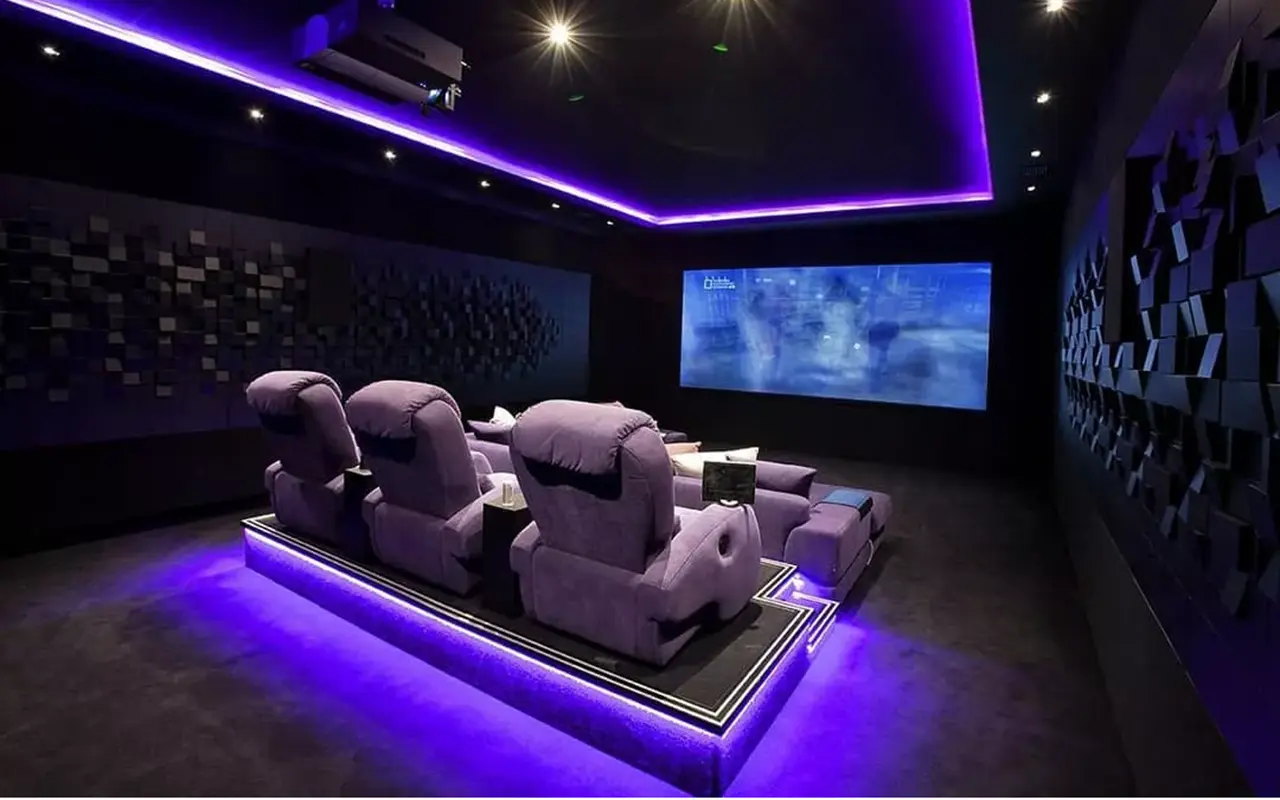
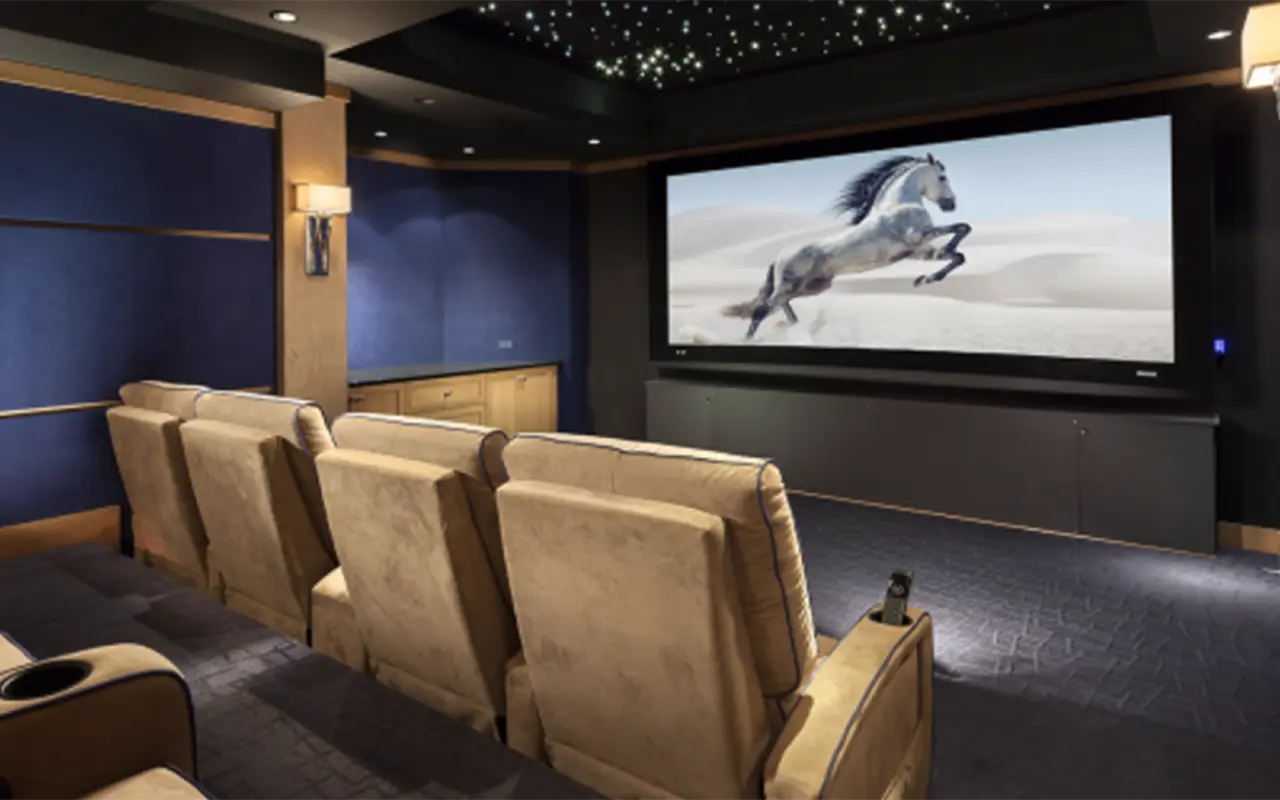

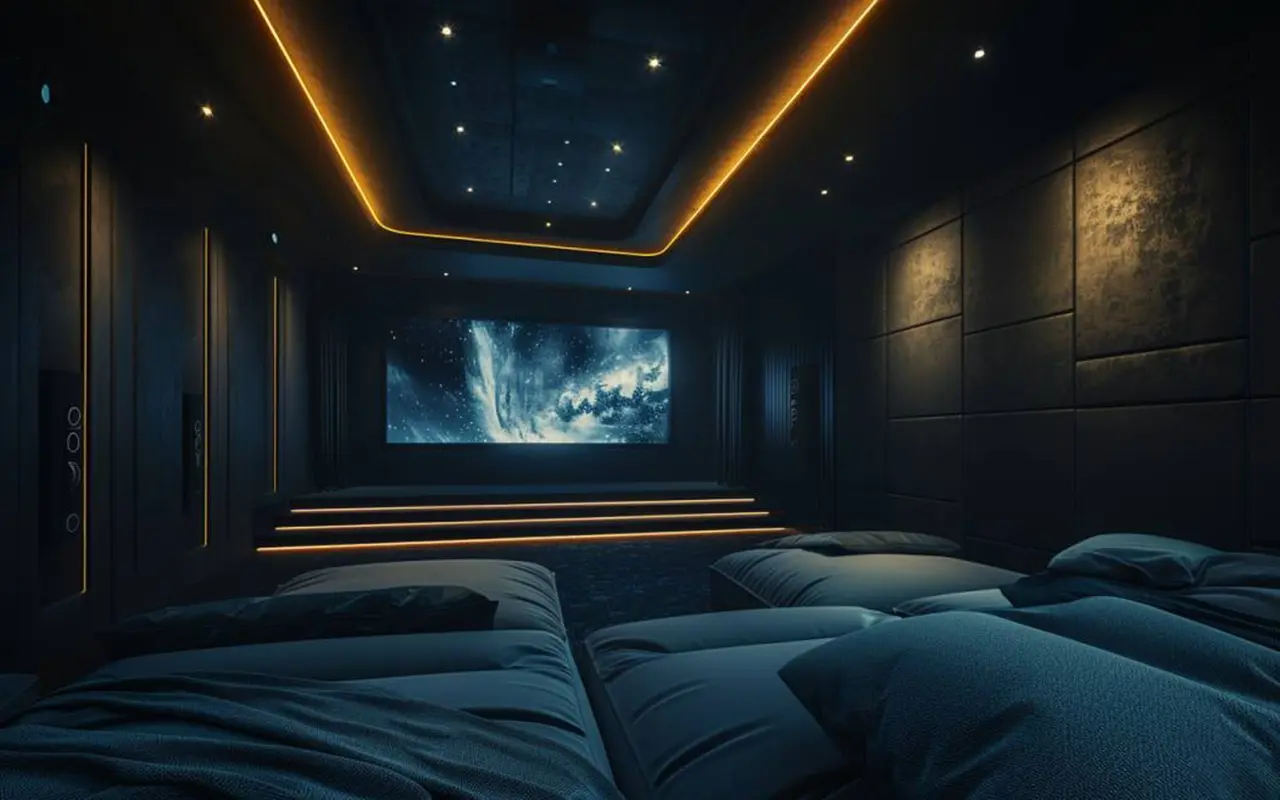
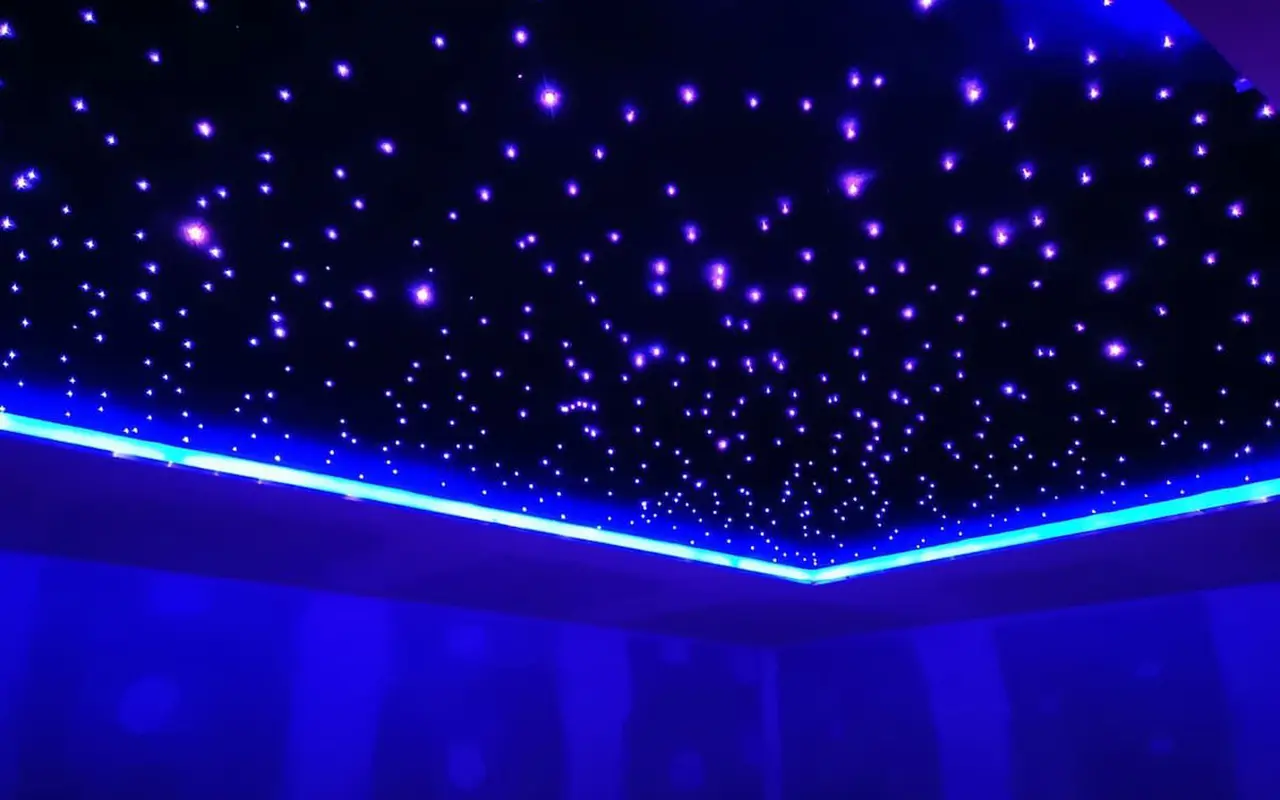

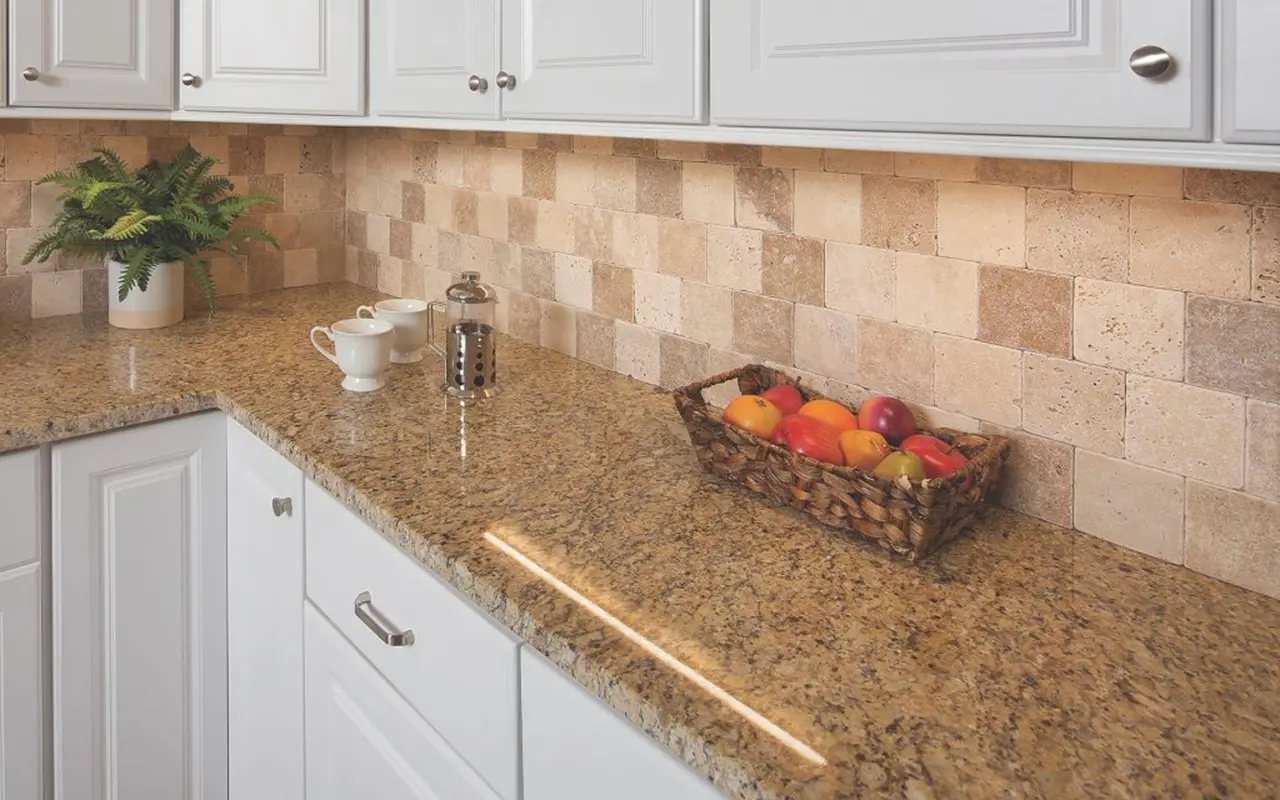
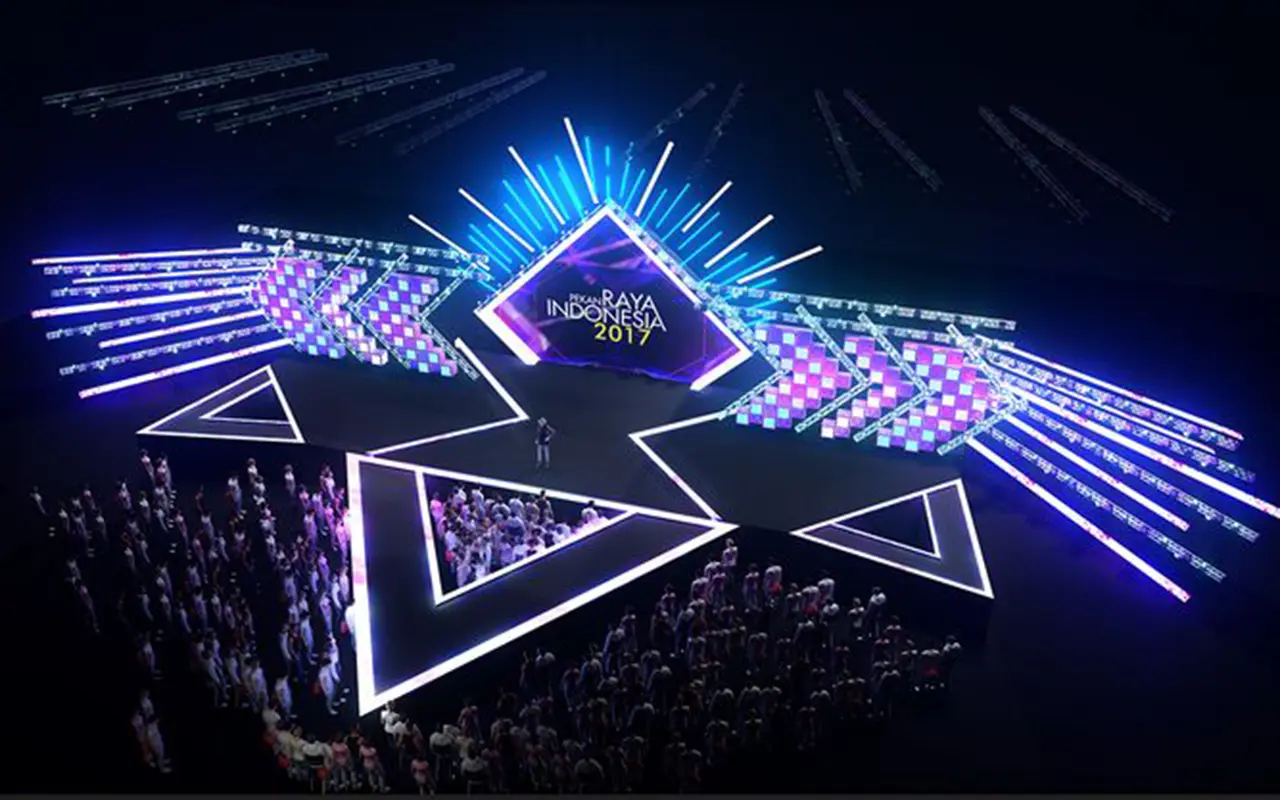
Cevapla
Tartışmaya katılmak ister misiniz?Katkıda bulunmaktan çekinmeyin!